Monasteries in Bhutan
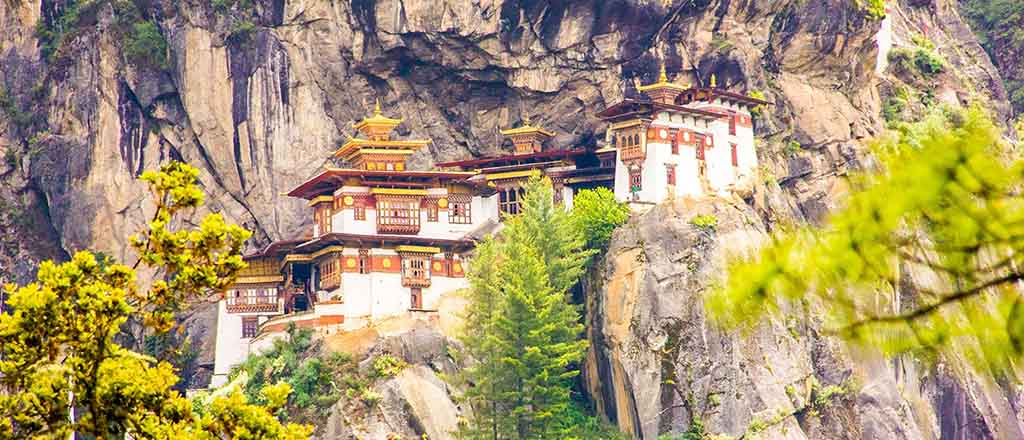
Bhutan is one of the most tranquil and beautiful tourist destinations in the world, noted for its panoramic Himalayan views and majestic Monasteries in Bhutan. Bhutanese monasteries are located distant from the bustling and crowded towns, ensuring travellers a calm journey experience that will refresh their minds and souls. Bhutan is a popular location for those who enjoy learning about a country’s history.
Bhutan is home to multiple amazing monasteries, from the famous Taktsang Monastery to the amazing Tango and Cheri Monasteries, all of which have fascinating histories and legends to tell. Tourists who wish to visit famous monasteries in Bhutan should do so during one of the country’s festivals in order to have the most enjoyable and memorable experience.
In this blog post, we list ten famous monasteries in Bhutan to treat your mind and soul. Although Bhutan is not limited to just ten, Norbu Bhutan will plan your vacation in a way that you will not miss out on places that are not listed above. Let’s get into it!
1. Taktsang (Tiger’s Nest) Monastery: Paro
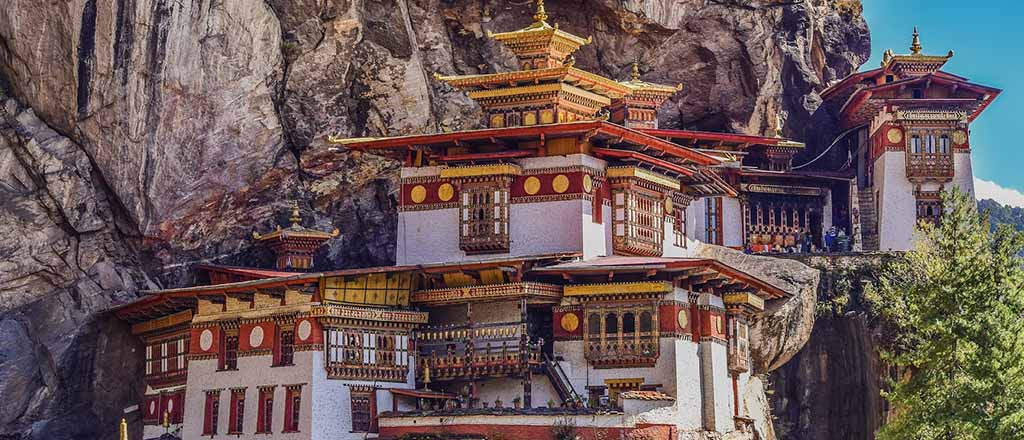
The Tiger’s Nest, or Taktsang Monastery, is one of the famous monasteries in Bhutan, perched approximately 3,120 meters above the Paro Valley on a sheer cliff edge. The monastery can only be reached by foot after a two- or three-hour journey through pine forests and mountains.
The journey, however, is worthwhile because you’ll be rewarded with panoramic views of the surrounding gorgeous emerald mountains and valleys, as well as the chance to witness vividly colored prayer flags signifying protection and good luck once you reach the peak.
2. Kyichu Lhakhang Monastery: Paro
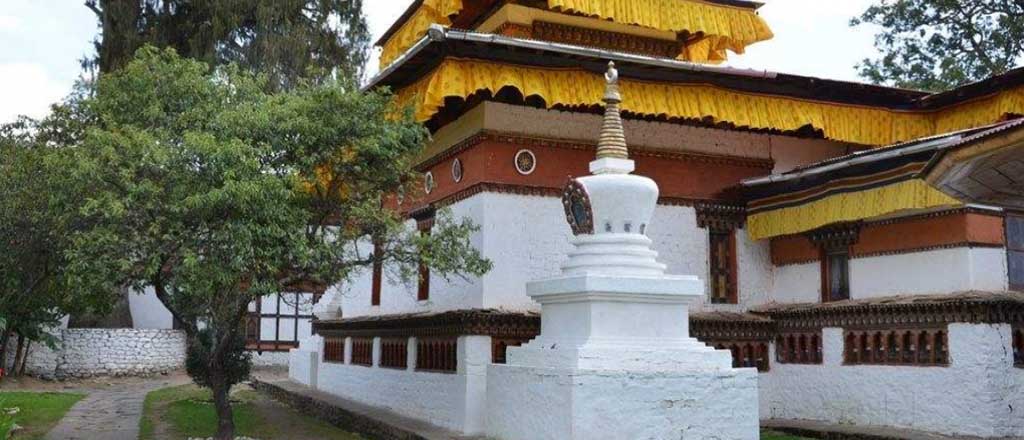
After Taktsang, Kyichu Lhakhang Monastery is another popular religious monument in Paro, featuring tall sculptures of Guru Rinpoche and Red Kurukulla. The prayer wheels encircling the stupa are spun by locals, particularly senior pilgrims who are devoted Buddhist followers.
Travellers can visit the place and interact with the elderly, telling more about the place and having a deeply personal insight. The majority of these monasteries resemble Indian Buddhist monasteries.
3. Gangtey Monastery: Wangduephodrang District
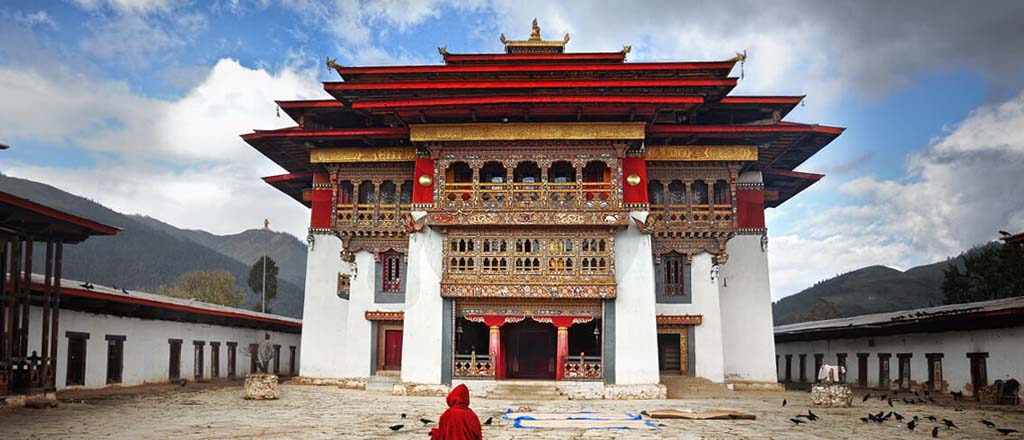
The Gangtey Monastery is an important Nyingmapa Buddhist monastery in Western Bhutan, located in the Wangdue Phodrang District. The location is home to the country’s endangered Black Necked Cranes and offers views of Phobjikha Valley. Attend the Annual Black-Necked Crane Festival in November to learn more about the Valley’s cultural heritage and traditions.
Over 300 cranes migrate throughout the festival, and visitors can learn about the importance of endangered species conservation and the history of the area. The visitors can have a traditional experience of how people live in Bhutan and how we celebrate with food, dances, and the gathering of locals to witness the festival.
4. Tango Monastery: Thimphu
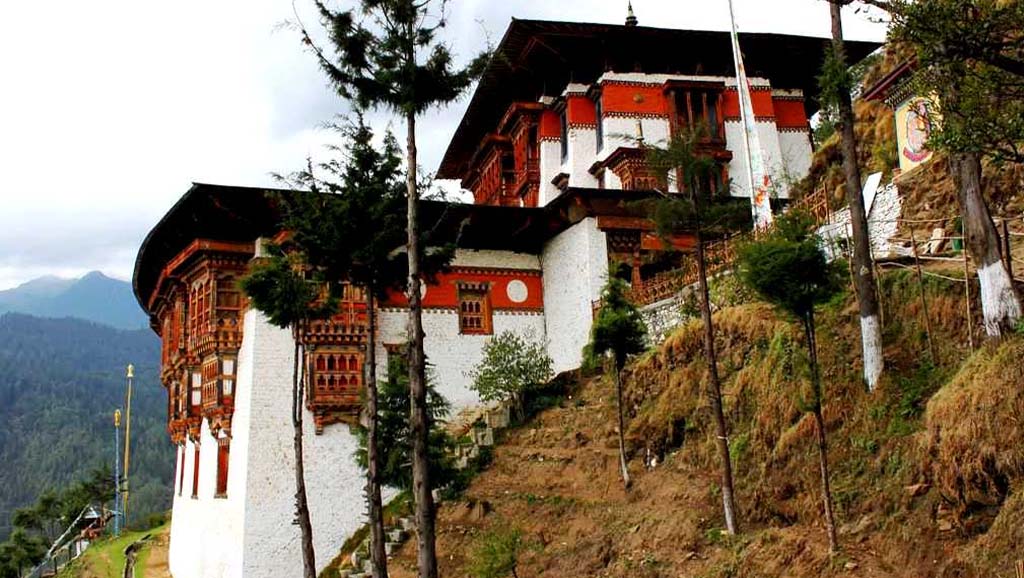
Tango Monastery, which was built on the meditation cave of Ngawang Namgyal, was named after a horse-head-shaped rock found inside the cave. It is one of Bhutan’s most important Buddhist educational institutes, having been built in the 13th century.
Visit this monastery to witness 6 other Lhakhang, all of which are located on the same grounds. The major temple, Trulku Lhakhang, houses a magnificent gold and copper Buddha figure. Experienced guides from Norbu Bhutan will take you through all of the places, explaining the significance of the place for travellers who want to learn Buddhism and how it is being practiced in Bhutan.
5. Cheri Monastery: Thimphu
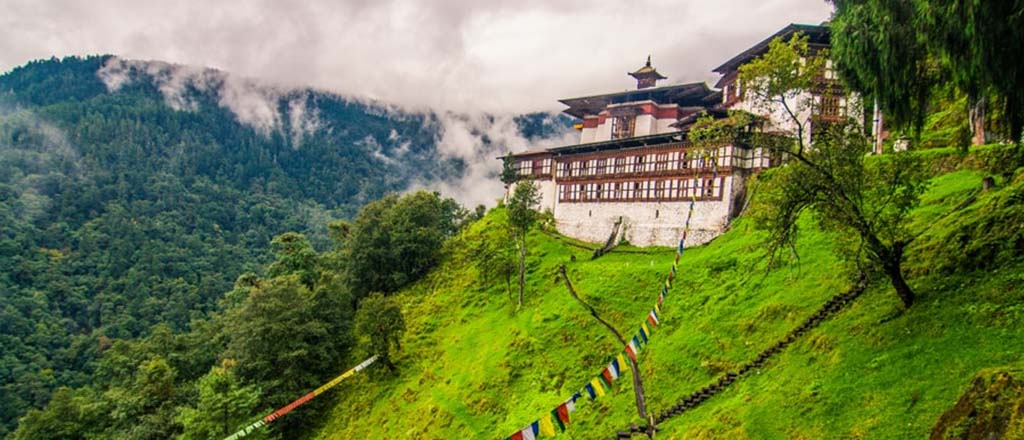
Cheri Monastery, located next to Tango Monastery, is a 5-minute drive to the base from Tango and a 1-2-hour climb uphill. This monastery, built-in 1620 by Ngawang Namgyal, is a major learning and retreat center for people of southern Drukpa descent today.
The journey up to Cheri Monastery through beautiful green pine and rhododendron trees is spectacular. Bright prayer flags, a tranquil prayer room, and Buddhist paintings encircle the monastery, making it not only one of the famous monasteries in Bhutan but also the best.
6. Jambay Monastery: Jakar, Bumthang
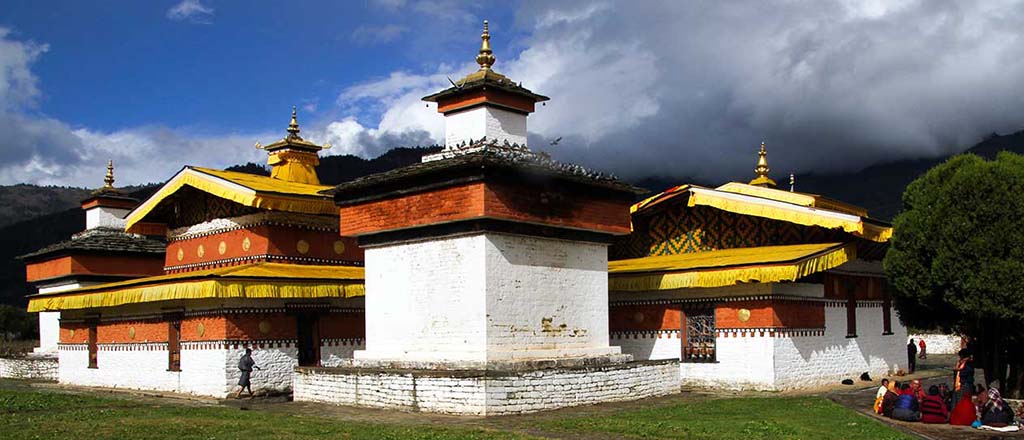
Jambay Lhakhang Monastery, one of the 108 temples established by Songstan Gampo, the powerful Tibetan King, attracts thousands of tourists during its grand annual celebration of midnight sacred naked dances. Jambay Lhakhang, a vintage Bhutan monastery with murals, wall paintings, and miniature temples, is located on the sacred land of Bhutan.
Legend has it that the temple of Jambay Lhakhang in Bhutan’s Bumthang District was built to pin down the demon’s left knee. With this powerful Lhakhang and the other temples in place, the demon was permanently nailed to the earth, allowing the king to cleanse Tibet of evil and introduce Buddhism.
Only a few of the 108 temples that were intended to be built to slay the demon are still standing. Jambay Lhakhang, one of the famous monasteries in Bhutan, is the oldest and most revered temple in those 108 temples.
7. Tamshing Monastery: Bumthang
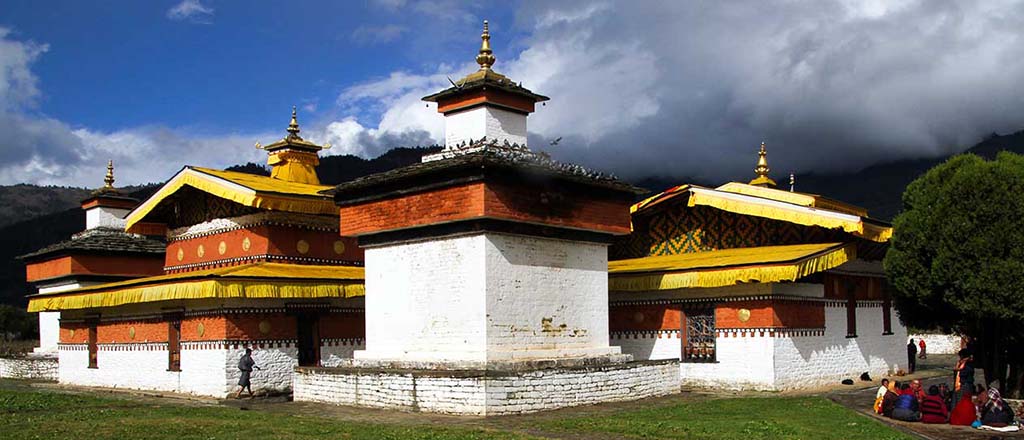
Tamshing Lhakhang, one of the other famous monasteries in Bhutan, is the site of Buddhist sacred mask dances and the Tsechu festival. Many residents and devotees come to this monastery to perform religious rites and prayers. This is one of Bhutan’s few monasteries dedicated to Pema Lingpa’s teachings. Tourists from all over the world come and witness the Tsechu festival and enjoy the warmth of hospitality by the locals.
It comprises temples and a claustrophobic vihara. It is home to more than 95 Buddhist monks. The monastery was submitted for inscription on the List of World Heritage Sites in March 2012, and it is now on the tentative list.
8. Kurjey Monastery: Bumthang
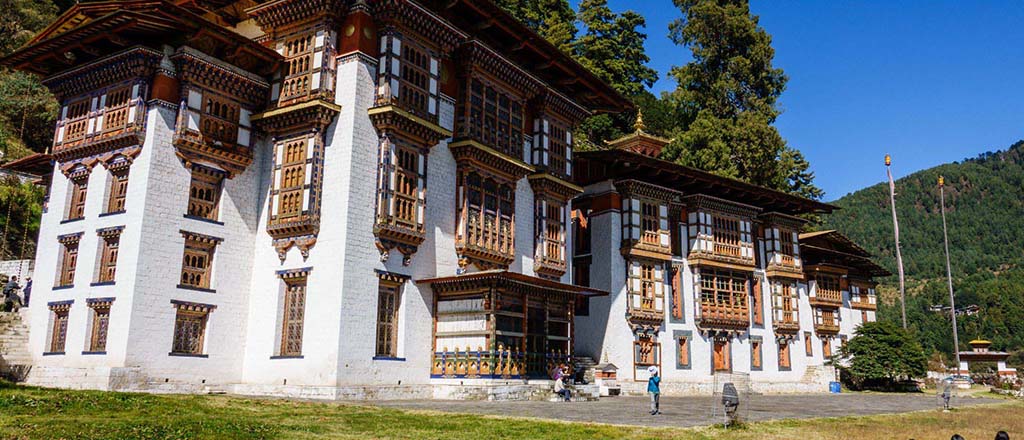
Kurjey Lhakhang is one of the most historically famous monasteries in Bhutan. Guru Rinpoche is said to have left his imprint in the monastery’s cave temples. This is also the final resting place of Bhutan’s first three monarchs. A tall cypress tree stands beside the main temple and is thought to be Guru Rinpoche’s walking stick.
The second temple, which houses a sacred shrine, was built by Bhutan’s first monarch, Ugyen Wangchuk, when he served as the Penlop of Trongsa in 1900. The main attraction here is a ten-meter-tall monument of Guru Rinpoche accompanied by his eight forms.
The complex’s third and most current temple, erected under the patronage of Her Majesty, the Queen Mother, Ashi Kesang Wangchuk, was dedicated in 1984. She also spearheaded the installation of 108 chortens throughout the complex, as well as other features such as paved temple courtyards and a large wheel of life on the compound’s porch.
9. Memorial Chorten, Thimphu
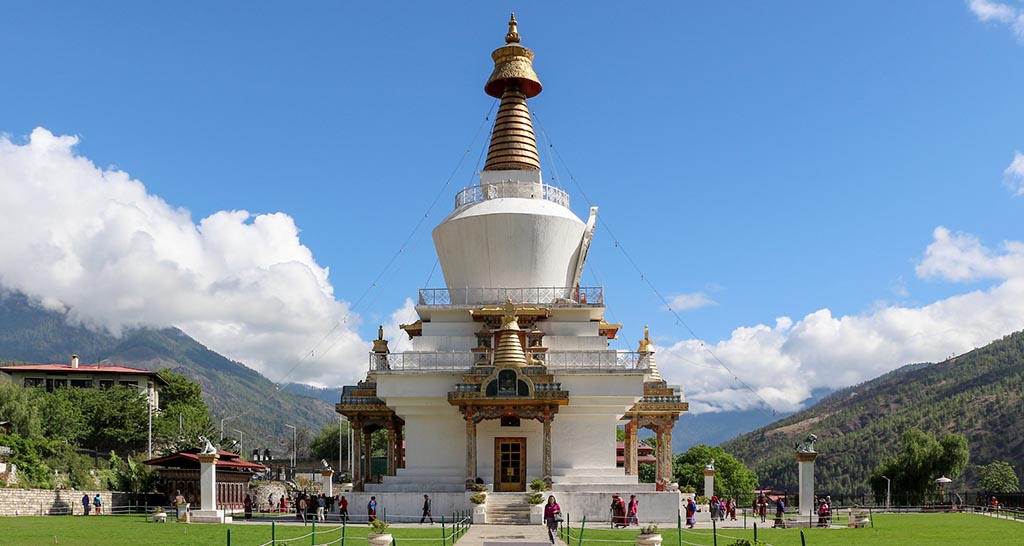
This holy abode, also known as Memorial Stupa and Thimphu Memorial Chorten, features golden spires, bells, assembly rooms, paintings, and a famous portrait of the third Druk Gyalpo (King) of Bhutan dressed in national attire. Unlike other Bhutanese monasteries, Memorial Chorten does not contain human remains.
Every traveler is drawn to the lovely garden surrounding the stupa, as well as the gate with slate carvings, statues, and murals. The chorten was built in memory of Bhutan’s third king. Hence, also known as Jigme Dorji Wangchuck Memorial Chorten.
10. Punakha Dzong
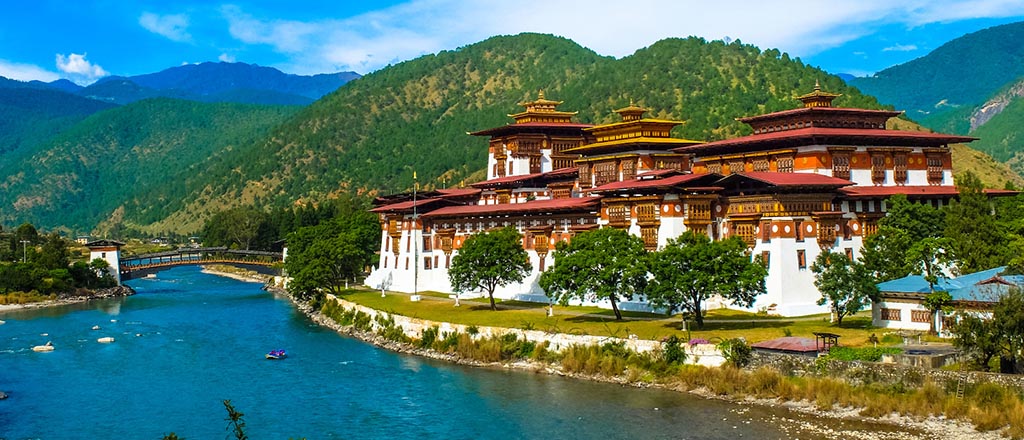
Punakha Dzong in Punakha, dubbed ‘The Palace of Great Happiness,’ served as the country’s capital until the early twentieth century. It is Bhutan’s second oldest and largest dzong, with exquisite interior and intricate embellishments like murals, carved woodwork, and paintings.
Punakha is Bhutan’s winter capital, thanks to the region’s pleasant temperature. This dzong is where Bhutan’s chief of clergy and his entourage of monks spend the winter. The dzong is surrounded by jacaranda trees, which blossom with mauve flowers in the spring. Punakha is also home to Bhutan’s longest suspension bridge (Punakha Suspension Bridge), as well as Chimi Lhakhang, the Divine Madman’s fertility temple.
These were the ten famous monasteries in Bhutan to treat your mind and soul. It is definite that Bhutan holds some of the most spiritual locations in which travellers from all around the world visit and feel rejuvenated. Book your travel today with Norbu Bhutan and experience this land of happiness with us. You will be assisted with professional services and guides who will direct you wholeheartedly. You can also visit our vacation in Bhutan blog posts to know more about how you can spend your vacation in Bhutan.


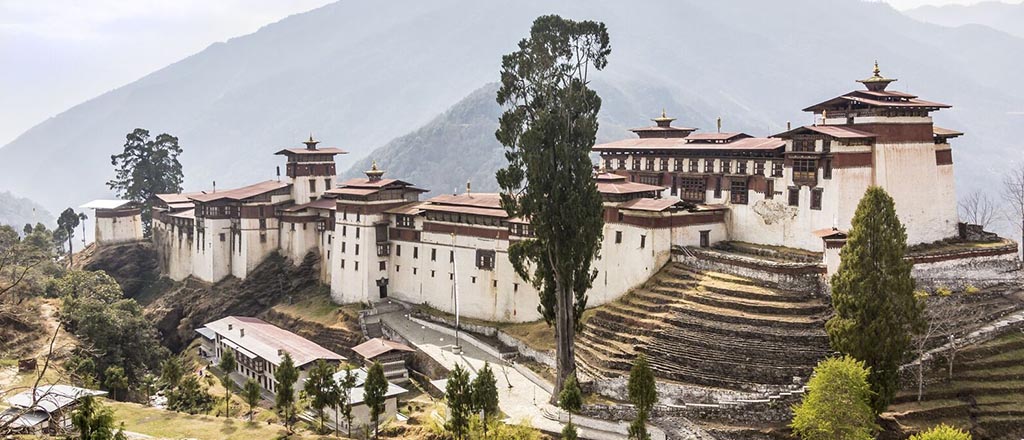
No responses yet